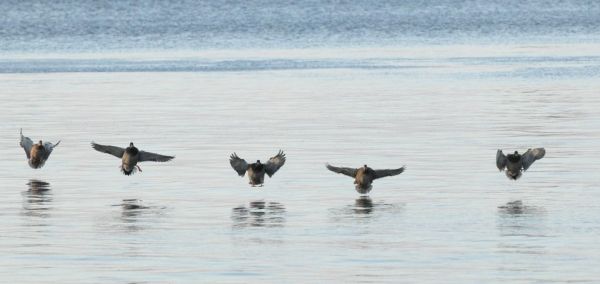A new scientific article shows that 25 European waterbird species can change their wintering areas depending on winter weather. Warm winters allow them to shift their wintering areas northeastwards, whereas cold spells push birds southwestwards. Species wintering in deep waters show the fastest long-term change: their abundances have shifted annually about 5 km northeastwards in the past 24 years.
A recent collaborative study between 21 European countries provides new insights into how waterbirds respond to the changes in winter weather conditions at large scale. The study shows that waterbirds respond to both year-to-year and long-term changes in winter weather conditions, which is evident by the changes in local abundances during winter.
– Our study highlights that not all waterbirds respond equally to changes in weather conditions. Species preferring shallow and deep water are responding fastest to annual variation in temperature, whereas farmland species like geese, show weak responses, says Diego Pavón-Jordán from the Helsinki Lab of Ornithology at Finnish Museum of Natural History and leading author of this study.
In addition to the year-to-year variation, the study also shows that there is a long-term shift of the centre of the wintering population of species preferring deep waters, which has been progressively moving northeastwards during the 1990s and 2000s. The centre of the wintering population of species preferring shallow waters moved northeastwards during the 1990s and early 2000s but southwestwards after mid-2000s, coinciding with several consecutive harsh winters in Europe.
Read more at University of Helsinki
Image: Mallard is one of the species which are responding fastest to annual variation in temperature (Credit: Aleksi Lehikoinen)


